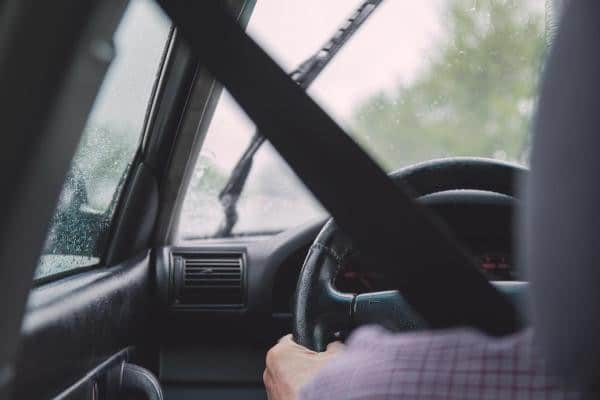We have looked previously at how to prepare our vehicles for the rain, now it’s time to look at what we need to do to drive safely when it’s raining.

Firstly, defog the windows. In the rain, the car windows tend to fog up due to the humidity and the difference in temperature between the outside and the inside of the car. This condensation prevents correct visibility.
The rear windows have an anti-fog system in all cars and the newest ones can also incorporate it in the windshield. In addition, there are also anti- fog treatments that can be applied to the glass.
If we do not have this technology, we can always defog the windscreen using ventilation: simply direct the air to the glass, selecting this position on the dial so that it comes out through the dashboard grilles. This air must always be hot (heating).
Turn on the lights. Given that visibility drops significantly in the rain, it is vital to be seen by other cars. In this way, when it rains, the DGT recommends driving with the dipped headlights activated. And in case of particularly heavy rain, the front fog lights might even be needed.
Increase the safety distance. On wet roads, grip is reduced, so the braking distance increases. Thus, the DGT recommends leaving twice the distance than usual with the vehicle in front of us to avoid impacts. You might remember the two-second rule, always allow 2 seconds distance between you and the vehicle in front, which can be checked by counting when the vehicle in front passes a fixed point on the road and allowing at least 2 seconds before you reach the same point. It wet weather, this distance should be at least doubled, and so 4 seconds would be the minimum.
Smooth ride. In the rain, it is essential to avoid sudden manoeuvres: swerves, braking or strong acceleration should be avoided. Thus, we must brake and accelerate progressively, treating the pedal with care.
Reduce speed. The higher the speed, the greater the risk of aquaplaning, since it will be more difficult for the tyre to dislodge the water. But in general, given that grip is reduced, and braking distance is increased, the ideal thing to do in the rain is to drive slower.
In addition, a high speed favours the tunnel effect, which reduces peripheral vision, which is a dangerous combination if it is also raining since visibility is reduced.
Avoid puddles and pools of water. Asphalt does not always dislodge water correctly, in addition to the fact that if there are irregularities in the surface, puddles or pools with accumulated water can form. In these areas, the risk of aquaplaning is higher. Of course, you must be careful not to deviate into a dangerous path when avoiding puddles of water, such as an adjoining lane, or even oncoming traffic.
If you come across a large body of water, as far as possible, the ideal is to avoid driving through it. But if there is no choice, it should be done as slowly as possible and trying to cross it with all wheels. However, if the body of water is deep, or even if you cannot be certain of the depth, do not drive through it. As little as an eggcup amount of water can damage the engine and you could become stranded in the water.
If you suffer from aquaplaning, remain calm, hold the steering wheel firmly with both hands and as straight as possible, take your foot off the accelerator but try not to brake, if possible. If the car skids, try to smoothly correct the trajectory.
Overtaking in rain. If we have to overtake, it is advisable to increase the speed of the windscreen wipers to neutralise the spray effect generated by the other vehicle. Also, the DGT recommends doing the same if another vehicle overtakes us.
If you suddenly find yourself in the middle of a sudden deluge, the best thing to do is to stop the car. Extremely heavy rain can cause zero visibility from our vehicle, and also for others on the road.
You must however find a safe place to stop, ideally somewhere like a rest area or a petrol station if you are on a motorway, or find a safe location if you are on any other type of road.





